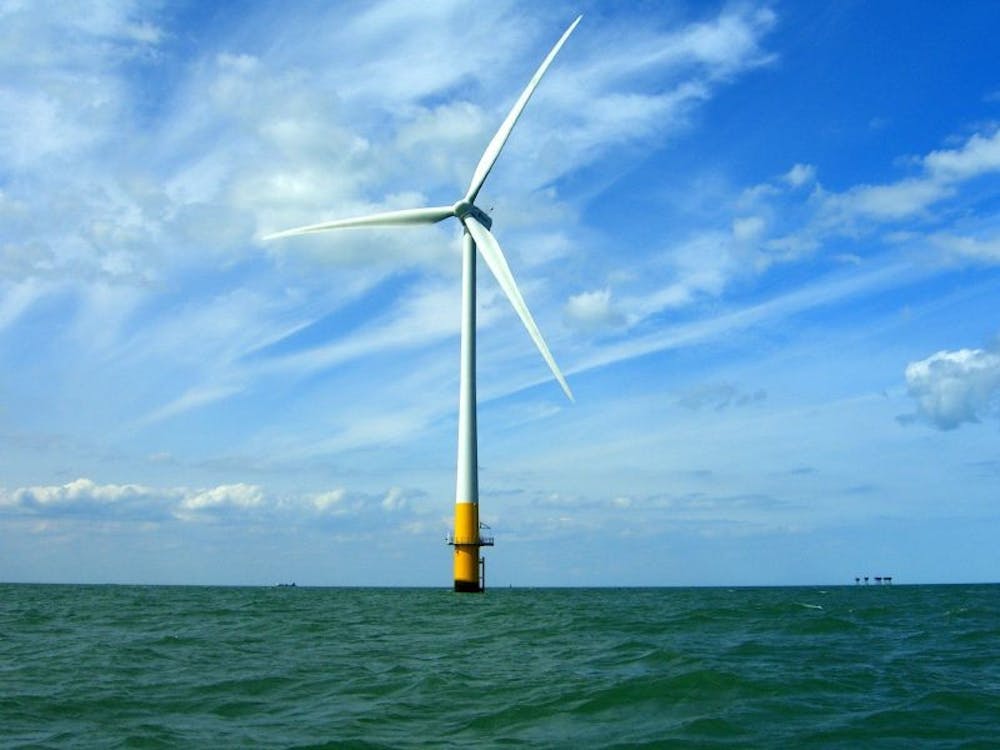Against the backdrop of sprawling construction projects on campus, the University is transitioning its energy systems to achieve net-zero carbon emissions on campus by 2046. University staff and industry experts weighed in on how the plans will impact campus life and the energy industry as a whole.
To meet its carbon targets, the University is replacing its steam-generated heating with a system that will be driven by electric heat pumps, thermal storage, and geo-exchange. According to the press release, the University will become one of the first institutions to do so at this scale.
According to the University’s Energy Plant manager Edward Borer, the University is currently in the process of implementing a district hot water system. They will put in place the TIGER-CUB (thermally-integrated geo-exchange resource central utility building), which is a facility that will draw heat out of the ground and deliver it to a hot water system. Geo-exchange is the process by which heat is extracted from buildings in the summer and stored in the ground to be used to reheat them in the winter.
In instances where renewable energy is insufficient for powering the campus, the University plans to purchase renewable energy from off-shore wind power to be delivered through an electric grid. But barring extreme temperatures, the new system will provide enough energy for the entire campus.
“It's a daunting task, but I think we’re up for it and excited about it,” Borer said.
Borer, who said he’s never experienced such an intense building construction program in his 27-year-long tenure, attributed the increased action to the efforts of President Christopher Eisgruber ’83 to construct the appropriate infrastructure plans to help the University reach its carbon goals.
According to Borer, while the up-front investment in the construction of these buildings is high, it will use less energy in its lifetime, reducing the cost of powering campus in the future.
For the University's existing infrastructure, there is an effort to increase energy efficiency through the improvement of doors, windows, and additional insulation.

Borer noted the importance of preserving certain parts of the University’s campus.
“We’re not going to remove Nassau Hall just because it's more efficient,” he said. “We want to ask window by window, facade by facade, how do we approach this in a way that maintains the integrity of the building while also making it more efficient?”
To support the growing energy infrastructure, there will also be new IT infrastructure, according to University Associate Chief Information Officer Donna Tatro.
“OIT [Office of Information Technology] is at work upgrading the campus network infrastructure to be highly secure, fast, and ready to support the increasing number of wireless devices on campus,” wrote Tatro in an email to The Daily Princetonian. “Facilities need this new network so they can manage the new campus geo-exchange heating, cooling, and power systems.”

Through the implementation of these systems of energy, administrators believe the University has become an industry leader when it comes to large-scale energy transitions.
“When you look at universities in the U.S., I see institutions like Princeton providing leadership and vision to a better environmental future,” said Robert Thornton, the president and CEO of the International District Energy Association (IDEA).
IDEA is a 501(c)(6) nonprofit industry association with 2,500 members worldwide. They include institutions like Princeton, Harvard, MIT, UCLA, and Purdue that own and operate district energy systems. Members also include companies that design, manufacture, and distribute technologies.
“People really appreciate not only what Princeton’s doing but how they have been forthcoming about the analysis they did to arrive at the plan, their hypotheses, and what they’re experiencing,” Thornton said.
Borer also noted how the University’s plan constitutes a highly adaptable model. However, other institutions may choose to adopt only some aspects depending on their environmental contexts.
While the plan may not have an impact on daily student life, the implications of these energy systems are vast.
According to Borer, if the job is done correctly, students should not feel a direct impact from the changes. In fact, due to the University’s building standards, the campus will hopefully be more comfortable for students.
The University has historically attempted to involve more students in understanding their energy usage. One example is the Tiger Energy App, which allows students to see how much energy they’re using. Though it has existed for years, Borer noted how many students are not aware of this resource.
The local energy generation has implications not only for the University, but for the broader community as well.
Thornton noted how in the aftermath of Hurricane Sandy in 2012, the resilience of the University’s microgrid enabled it to offer continuous energy to the greater Princeton community as well as members of the University.
“Local generation offers advantages that are important,” Thornton said. “As a society we’re encountering 500-year storms, extreme conditions, and weather aberrations. It's useful for our members to be able to share how they’re managing, responding, and planning for a different climate future than what we’ve had.”
Thornton asked that critics of the University’s plan be patient given the requirements for reliability and the ongoing strains of the economy. While the transition to low-carbon infrastructure is measured in years, its value spans decades, according to Thornton.
“The best time to plant a tree was 20 years ago. The second best time is now,” he said, referencing an old proverb. “I think Princeton is really trying to not just talk about, but actually deliver on, a low-carbon infrastructure, and they’re going to be commended.”
Kalena Blake is an assistant news editor. She can be reached at kalenab@princeton.edu.








